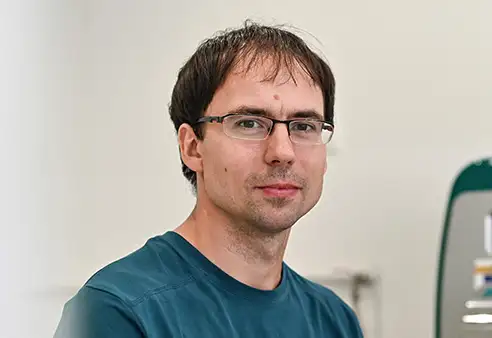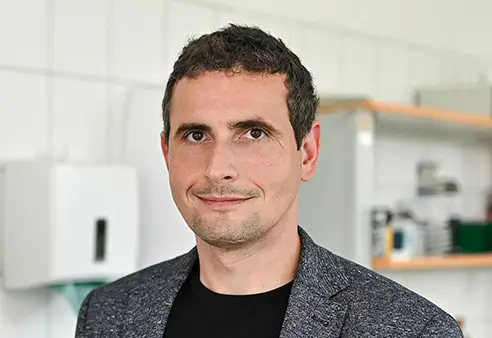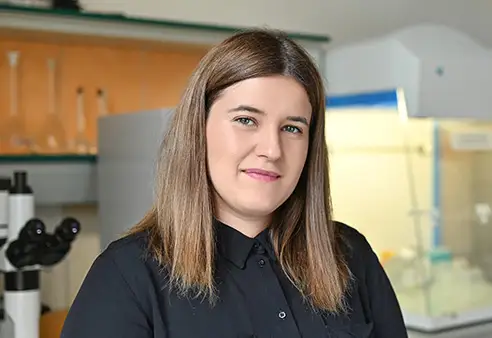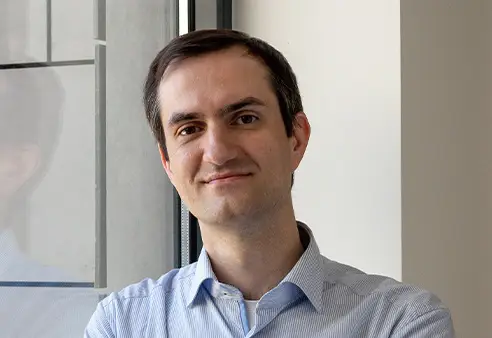Antibacterial polymers and a new material for 3D printing. Mgr. Mária Kováčová, Ph.D. develops them as part of her scientific work, at the Institute of Polymers of the Slovak Academy of Sciences (SAS) in Bratislava.
The work of Mária Kováčová is focused on two topics. The first one is antibacterial polymeric materials. "It mainly consists of the synthesis of hydrophobic carbon quantum dots, for which we also have a patent," says the young scientist. These are carbon nanomaterials that can also be produced, for example, by waste incineration. These nanoparticles are incorporated at the Institute of Polymers of the Slovak Academy of Sciences into polymeric materials, i.e. plastics, which serve as their carriers.
The use of materials treated with antibacterial effects is wide. They can be applied to surfaces such as walls, floors or windows, for example in hospitals or in public transport, but they can also be used to make medical instruments and aids. The great advantage of these materials is that their antibacterial effects can be completely controlled by ordinary blue LED light. They are currently testing the material for other types of microorganisms and preparing its commercial availability.
The second field of interest of Mária Kováčová is a new material for 3D printing. In cooperation with a Slovak company, they developed a material based on carbon nanofillers and recycled PETG. They have had this solution protected by a Slovak utility model. Highly durable, but at the same time very light material is suitable for various industries, such as automotive or aerospace, as it achieves the strength of helium for builders. Due to the fact that it is also resistant to cosmic radiation, it would also find its use in space.
The partnership Slovak company made a large robotic arm from this material, working on the basis of 3D printing. It is more than six meters long, but two people can easily load it and transport it to the construction site. At the same time, it is so flexible and strong that nothing will happen to it, even if four people sit on it. "With the help of this arm, our partnership company wants to build houses, architecturally more complex building elements and the like in the future," explains Mária Kováčová. The material in the the form of strings has already reached the market.
Her interest in chemistry and biology was aroused by her grammar school teacher. She also chose this direction while studying at the University of Constantine the Philosopher in Nitra. During her undergraduate studies she focused on viruses, while during her master studies the effect of copper complexes on microorganisms at the biochemical level became the field of her interest.
After graduating from university, she worked at SAS as a manager for technology transfer and intellectual property protection for biochemistry and medicine. She helped bridge the gap between scientists and industry, but was missing the laboratory and scientific research. In 2016, she joined the Institute of Polymers of the Slovak Academy of Sciences as a doctoral student, where she still works. She also completed scientific internships in Zlín and Belgrade. In her relatively short career, she has already had several successes, such as obtaining a European patent, a Slovak utility model, a number of publications and citations, awards and nominations.
Although Mária Kováčová works with plastics, in her free time she is interested in ecology and environmental protection. "I take it as my duty to teach people how to deal with them," she explains. So, she teaches people around her how to separate waste properly. In addition, she loves books, movies and computer games, especially horror and fantasy genres.



